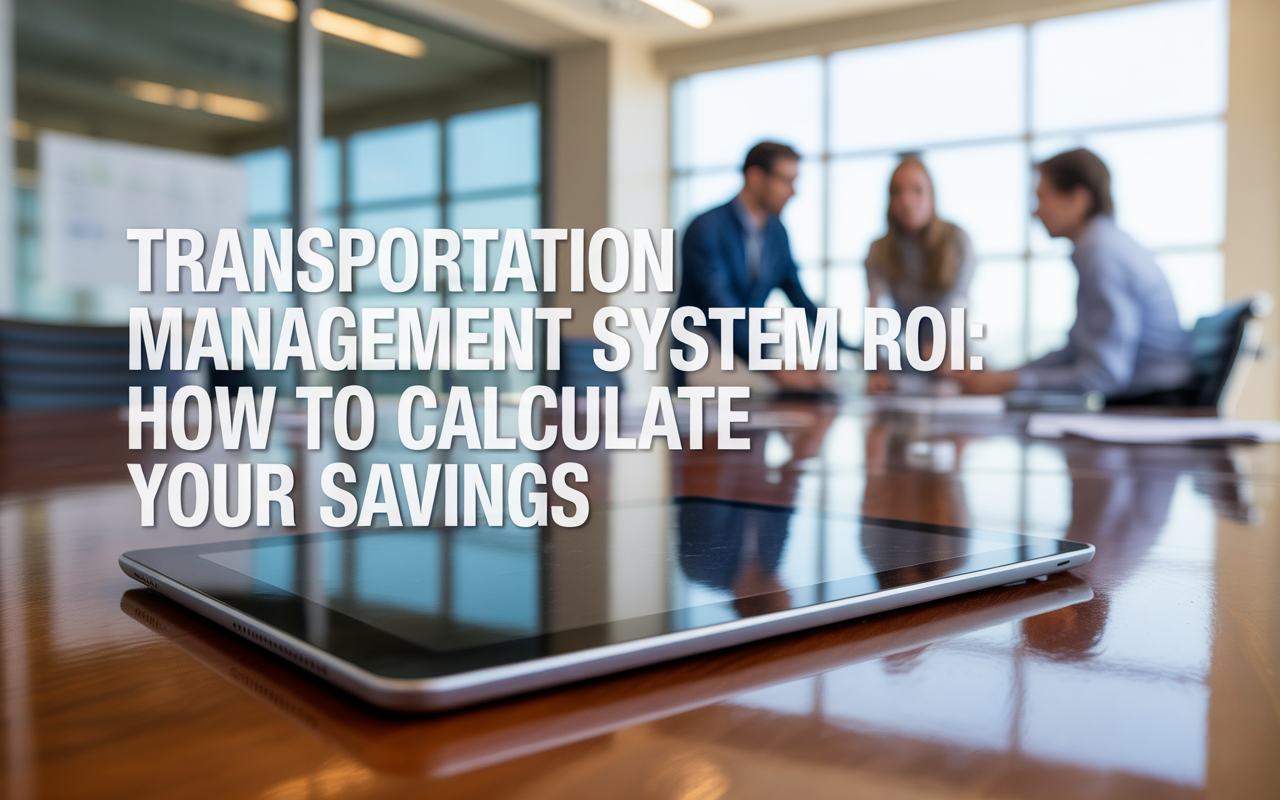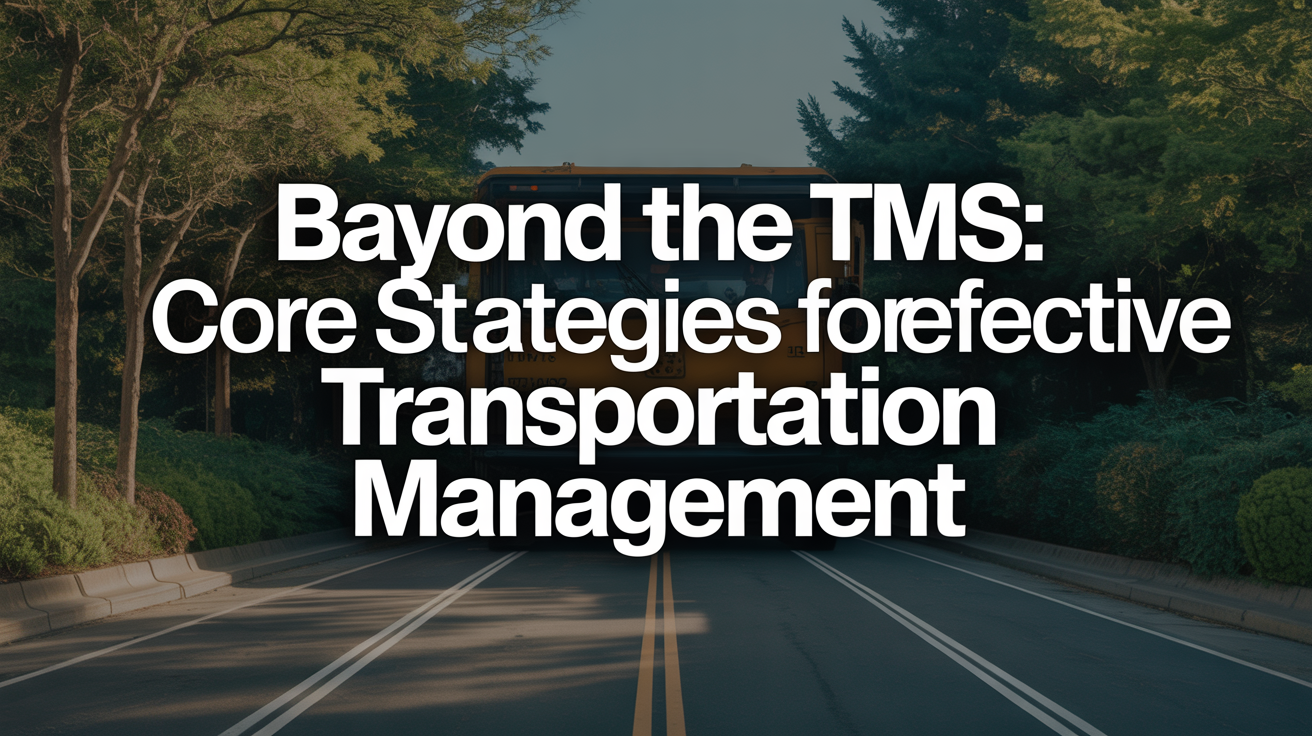Transportation Management System ROI: How to Calculate Your Savings
Introduction to Transportation Management System (TMS) ROI
A Transportation Management System (TMS) ROI measures the return on investment businesses gain by implementing a TMS, which helps streamline logistics and transportation operations. This calculation often balances cost savings against the initial and ongoing expenses of the system. For companies looking to optimize their supply chain, understanding this ROI is essential for making data-driven decisions. Simply put, it’s about knowing whether the benefits outweigh the costs. 📊
Understanding TMS ROI is crucial because logistics can account for a significant portion of operational expenses. Businesses need clarity on how much they stand to save before committing resources to new technology. By evaluating ROI, decision-makers can ensure their investments align with long-term goals and deliver measurable value. Plus, it sets the stage for smarter financial planning and better resource allocation. 💡
Key Benefits of Calculating TMS ROI
Calculating TMS ROI provides several advantages, including cost savings, improved operational efficiency, and a competitive edge in the market. Companies that understand their ROI can make informed decisions about scaling operations or adopting new technologies. These benefits aren’t just numbers-they translate into real-world improvements like faster deliveries and reduced overhead. 🚚
Beyond quantitative metrics, qualitative benefits play a vital role in ROI calculations. Improved service levels, enhanced visibility across the supply chain, and reduced risks are intangible yet impactful gains. Together, these factors create a holistic view of the value a TMS brings to an organization. As we dive deeper, you’ll see how both sides contribute to overall success. 🔍
Core Components Included in TMS ROI Calculation
The core components of TMS ROI include direct costs such as technology implementation, staffing needs, carrier management fees, and maintenance expenses. These elements form the foundation of any ROI analysis, helping businesses identify where money is being spent. Understanding these costs upfront ensures more accurate projections and avoids surprises down the line. 💸
On the qualitative side, factors like improved customer satisfaction, better compliance, and enhanced risk mitigation also contribute to ROI. While harder to quantify, these benefits add immense value to the business. By combining tangible and intangible elements, companies get a comprehensive picture of their TMS investment’s true worth. 🌟
Essential Metrics and KPIs to Track TMS ROI
To measure TMS ROI effectively, businesses must track key performance indicators (KPIs) such as cost per shipment, on-time delivery rates, freight spend analysis, load utilization, and carrier performance. These metrics provide actionable insights into how well the system is performing and where adjustments may be needed. Monitoring them consistently ensures continuous improvement over time. 📈
Tracking these KPIs not only supports ROI measurement but also drives strategic decision-making. For example, analyzing freight spend can reveal opportunities for negotiation or consolidation. Similarly, improving load utilization reduces waste and boosts efficiency. Each metric tells a story about your logistics operations, guiding you toward greater profitability. 🧮
“Tracking key performance indicators (KPIs) that reflect logistics performance is critical to effectively measuring TMS ROI. These can include (but are not limited to): cost per shipment, on-time delivery rate, freight spend analysis, load utilization rate, and carrier performance.” -Planimatik
By focusing on these KPIs, businesses can maintain a clear pulse on their TMS performance. Regular reviews help identify trends, spot inefficiencies, and capitalize on emerging opportunities. This proactive approach ensures sustained growth and maximizes the return on your TMS investment. 🚀
Steps to Accurately Calculate Your TMS ROI
Calculating TMS ROI involves gathering baseline cost data, projecting potential savings, and comparing those figures to the total investment required for implementation. Start by documenting current expenses related to manual processes, errors, and inefficiencies. Then, estimate how much the TMS will save through automation and optimization. This step-by-step method provides a clear framework for evaluation. 📋
It’s important to distinguish between annual and project-based ROI calculations. Annual ROI focuses on yearly savings, while project-based ROI considers one-time implementations or upgrades. Both approaches offer valuable perspectives, depending on your business goals. Additionally, factoring in short-term wins alongside long-term gains ensures a balanced assessment. ⚖️
Finally, remember that ROI isn’t static-it evolves as your business grows and adapts. Regularly revisiting your calculations allows you to refine strategies and maximize returns. With careful planning and consistent monitoring, you can unlock the full potential of your TMS investment. 🎯
Using TMS ROI Calculators: Tools & Best Practices
TMS ROI calculators are powerful tools designed to simplify the complex process of evaluating returns. They use input variables like route planning, execution efficiencies, and freight settlement to generate precise estimates. These calculators take the guesswork out of ROI analysis, providing reliable data to support your decision-making. 🛠️
To leverage these tools effectively, ensure all input data is accurate and up-to-date. Validate assumptions with real-world figures and consult with stakeholders to confirm alignment. Following best practices ensures your ROI calculations are trustworthy and actionable. With the right approach, these tools become invaluable assets in your logistics toolkit. ✅
 Calculating Cost Savings: Tangible and Intangible Benefits
Calculating Cost Savings: Tangible and Intangible Benefits
Direct cost reductions from a TMS often come from areas like freight rate negotiation, route optimization, and load consolidation. These tangible savings are easy to quantify and directly impact the bottom line. For instance, optimizing routes can cut fuel costs significantly, while consolidating loads minimizes unnecessary shipments. 💪
“Proving ROI requires companies to quantify the value that TMS technologies provide versus the cost of implementation and operation.” -SupplyChainBrain
Indirect benefits, though less obvious, are equally important. Improved customer service, better regulatory compliance, and least-cost carrier strategies enhance brand reputation and reduce risks. Together, these intangible gains create a ripple effect that strengthens the overall business. Combining both types of benefits paints a complete picture of TMS value. 🌈
When calculating ROI, don’t overlook these indirect contributions. They might not show up on balance sheets immediately, but their long-term impact is undeniable. By integrating tangible and intangible benefits, you’ll have a robust understanding of your TMS investment’s true worth. 🏆
Common Challenges in Measuring and Achieving TMS ROI
Measuring TMS ROI comes with challenges, including data collection difficulties, realistic benchmarking, and accounting for qualitative improvements. Incomplete or inaccurate data can skew results, leading to misguided conclusions. Similarly, setting benchmarks requires a deep understanding of industry standards and internal capabilities. 😓
To overcome these hurdles, adopt strategies like investing in robust data analytics tools and engaging cross-functional teams. Regular audits and transparent communication also foster trust and accuracy. By addressing these challenges head-on, businesses can achieve greater clarity and confidence in their ROI assessments. 🛡️
Best Practices for Maximizing TMS ROI
Maximizing TMS ROI starts with clearly defining the scope and aligning it with business needs. A tailored approach ensures the system addresses specific pain points and delivers maximum value. Without this alignment, even the most advanced TMS won’t yield desired results. 🎯
Continuous training and change management are equally critical. Employees need to understand how to use the system effectively, and leadership must champion its adoption. Stakeholder buy-in at all levels fosters a culture of collaboration and innovation. When everyone’s on board, the path to success becomes smoother. 👥
Finally, periodic reviews and iterative optimization keep your TMS running at peak performance. Logistics is dynamic, and so should be your approach to managing it. By staying agile and responsive, you’ll sustain high ROI and drive ongoing growth. 🔄
“A TMS saves freight costs, leading to better ROI by improving carrier selection and route optimization, reducing errors from automation, and improving efficiencies.” -SupplyChainBrain
Case Study Example: Calculating ROI in Practice
Imagine a mid-sized retailer struggling with rising freight costs and inefficient routes. After implementing a TMS, they reduced costs by 15% within the first year through optimized routing and carrier negotiations. Their stepwise ROI calculation revealed not only immediate savings but also long-term scalability benefits. 📊
This example highlights the importance of thorough planning and consistent monitoring. By tracking KPIs and adapting strategies, the retailer achieved sustainable growth. Readers can apply similar principles to their own businesses, ensuring their TMS investments pay off handsomely. 💼
How TMS ROI Supports Strategic Business Growth
Savings and efficiency gains from a TMS can be reinvested into expansion, innovation, or enhanced customer service. This reinvestment fuels strategic growth, enabling businesses to stay ahead of competitors. Whether it’s launching new products or entering untapped markets, a strong TMS ROI lays the groundwork for success. 🌍
 Adopting a TMS and measuring its ROI also aligns with broader digital transformation initiatives. It demonstrates a commitment to leveraging technology for smarter, faster, and more sustainable operations. As industries evolve, businesses equipped with a robust TMS will thrive in the digital age. 🚀
Adopting a TMS and measuring its ROI also aligns with broader digital transformation initiatives. It demonstrates a commitment to leveraging technology for smarter, faster, and more sustainable operations. As industries evolve, businesses equipped with a robust TMS will thrive in the digital age. 🚀
Choosing the Right TMS for Maximum ROI
Selecting the right TMS requires considering factors like customization options, vendor support, pricing transparency, and scalability. A system that grows with your business ensures long-term value and minimizes disruptions. Avoid solutions that lack flexibility or fail to meet future needs. 🤔
To avoid common pitfalls, conduct thorough research and seek expert advice. Overlooking hidden costs or underestimating implementation challenges can diminish ROI. By choosing wisely, businesses set themselves up for success and reap the rewards of a well-executed TMS strategy. 🏅
FAQ: Transportation Management System ROI
- How often should TMS ROI be evaluated?Evaluating TMS ROI annually or semi-annually ensures ongoing savings and performance improvements. Regular reviews help identify new opportunities and address emerging challenges, keeping your logistics strategy sharp and effective. 🔍
- What costs should be included in TMS ROI calculations?Include both direct costs (technology, staffing, carrier fees) and indirect costs (training, change management). A comprehensive calculation captures the full scope of expenses and benefits, ensuring accuracy and reliability. 🧾
- Can small and midsize businesses achieve significant ROI from a TMS?Absolutely! Scalable TMS solutions cater to organizations of all sizes, offering tailored features and flexible pricing. Small and midsize businesses often see quick wins in efficiency and cost savings, making TMS adoption highly worthwhile. 🌟
- What are some common pitfalls to avoid when measuring TMS ROI?Avoid overestimating benefits, neglecting data accuracy, and ignoring change management costs. These mistakes can lead to unrealistic expectations and diminished returns. Careful planning and validation mitigate these risks. ⚠️
- Do intangible benefits make a difference in ROI calculations?Yes, intangible benefits like improved service and compliance matter greatly. Though harder to quantify, they contribute to long-term success and resilience. Valuing these alongside direct savings creates a holistic ROI perspective. 🌈
Conclusion
Accurately calculating TMS ROI is vital for making informed investment decisions and optimizing transportation management. By integrating tangible and intangible benefits, tracking key KPIs, and embracing continuous improvement, businesses can unlock substantial value. The journey doesn’t end here-it’s an ongoing process of refinement and growth. 🌱
If you’re ready to take the next step, assess your current logistics processes and explore available TMS ROI calculators. For expert guidance tailored to your unique needs, reach out to Nektar.io. Their team specializes in helping businesses maximize their TMS savings and achieve transformative results. Don’t wait-start building your roadmap to success today! 🚀



